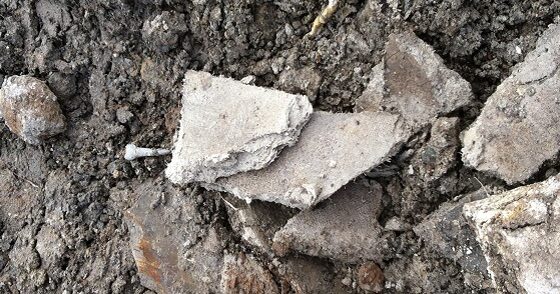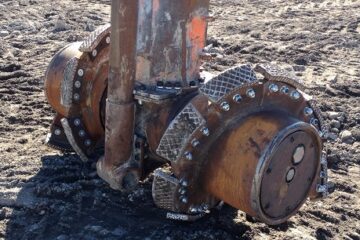What can you do with your asbestos contaminated soil?
I hope you’ve got over the shock of finding you have a problem with asbestos contaminated soils. Dealing with asbestos is a tricky business, firstly you must find out the asbestos content of the soil, and then the nature of the asbestos (fibrous would be expensive news), you can then look at soil remediation.
Asbestos soil remediation is almost always dealt with by excavation and disposal off site, one option if all you have are asbestos containing materials (ACM) and no loose fibres, is to hand pick the ACMs and dispose of them separately.
The cost of hazardous soil removal might also help you, see this blog post here.
I’ve summarised the main regulations below which I hope will answer a few more questions. The EIC/CL:AIRE and CIRIA announced a Collaborative Agreement on Industry Guidance and Code of Practice on Asbestos in Soil on 3rd February 2012. We’re all looking forward to some clearer guidance in the future. If you have any questions then drop us a line (0131 538 8456) or e-mail (info@soilutions.co.uk), we’ll be happy to help you.
Both The Hazardous Waste (England and Wales) Regulations 2005 and The Special Waste Amendment (Scotland) Regulations 2004, require that any waste having an asbestos content greater than 0.1% weight/weight (w/w) is classified as Hazardous Waste. Any waste with an asbestos content of less than 0.1% w/w can be classified as non hazardous waste, unless there are other contaminants present which would make the waste hazardous.
Where fibrous asbestos is present at concentrations greater than 0.001%, these can be considered to pose a risk to human health and must be dealt with as hazardous soils for disposal purposes.
Where the asbestos is deemed to be of a fibrous nature the HSE require that the handling of the material is undertaken by a suitably licensed company. The Carriage of Dangerous Goods (etc) Regulations 2009 (CDG2009) applies in this instance.
You local council Contaminated Land Officer and/or Environmental Health Officer should be able to help you understand your responsibilities, however we recommend going to them prepared with knowledge of your problem and your proposed solution.
2021
Soil remediation guide
Approaching soil remediation without any prior knowledge can be difficult and uncomfortable at times, especially when it can potentially be very costly. This free eBook will help you understand the whats, the whys and the hows of soil remediation in the simplest terms.







You have included lots of useful information. Thank you for sharing.
Thank you for the feedback. Happy to help